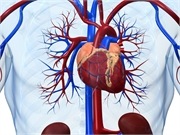
On April 1, 2022, at the American College of Cardiology (ACC) 71st Scientific Sessions & Expo, the ACC, the American Heart Association (AHA), and the Heart Failure Society of America (HFSA) published a new guideline document for the evaluation, management, and prevention of heart failure (HF). This new document serves to replace the 2013 guidelines and the 2017 focused update and is directed to all health care providers of patients with cardiovascular disease, with or without heart failure.
According to a joint press release, the new guidelines increase “the focus on preventing HF in people who are showing early signs of ‘pre-HF,’” and also update treatment strategies to include SGLT-2 inhibitor (SGLT2i) medications for patients with symptomatic HF.
Paul A. Heidenreich, MD, MS, chair of the guideline writing committee, explained that “one primary goal with the new guideline was to use recently published data to update our recommendations for the evaluation and management of HF,” and further wrote that “one focus was prevention of heart failure through optimizing blood pressure control and adherence to a healthy lifestyle.”
In the guidelines, one significant update was redefining the ACC/AHA staging for the A to D stages, which were previously focused on “the development and progression of the disease, with advanced stages indicating more serious disease and reduced survival rate.” The new guidelines recategorize the four stages as follows:
- Stage A: At risk for HF, but without symptoms, structural heart disease, or blood tests suggesting heart muscle injury. Notably, “this includes people with high blood pressure, diabetes, metabolic syndrome and obesity, exposure to medications or treatments that may damage the heart (i.e., chemotherapy drugs), or hereditary risk for HF.”
- Stage B: “Pre-HF.” This stage is defined as no symptoms of HF but evidence for any one of: structural heart disease—such as reduced ejection fraction, enlargement of the heart muscle, abnormalities in heart muscle contraction, or valve disease—increased filling pressures as determined via ultrasound, or risk factors from stage A, “plus increased levels of B-type natriuretic peptide or persistently elevated cardiac troponin, an indicator of heart muscle injury.”
- Stage C: Symptomatic HF, described as structural heart disease with current or previous symptoms of heart failure, including shortness of breath, persistent cough, leg, feet, or abdominal swelling, fatigue, and nausea.
- Stage D: Advanced HF, defined as “HF with symptoms that interfere with daily life, are difficult to control, and result in recurrent hospitalizations despite continued guideline-directed medical therapy.”
The guideline now states that the New York Heart Associations classifications are to be used when patients reach stage C or stage D to further assess their functional capacity and inform potential treatment options.
Authors of the joint release acknowledged that the inclusion of high blood pressure, obesity, and diabetes places “a large proportion” of the US population in stage A, or “at risk for HF.” The updated guideline recommends guideline-directed blood pressure control for this category, and also the consideration of SGLT2i medications for patients with Type 2 diabetes and either confirmed cardiovascular disease or high disease risk. “In general,” the guideline states, “the mainstays of cardiovascular disease prevention are recommended to reduce HF risk,” such as “healthy lifestyle habits, healthful dietary patterns, avoiding smoking, and maintaining a healthy weight.”
The recommendations for stage A individuals also apply to people in stage B, or “Pre-HF,” but health care providers should also consider additional medications, noted in the publication, to prevent HF progression to stage C. Those who do progress “should receive care from multidisciplinary teams to facilitate guideline-directed medical therapy and self-care support for learning to manage symptoms.”
The guideline also updated the language used in left ventricle ejection fraction (LVEF)-based HF classifications to: HF with reduced ejection fraction (HFrEF, LVEF ≤40%); HF with improved ejection fraction (HFimpEF, LVEF which has improved from ≤40% to >40%); HF with mildly reduced ejection fraction (HFmrEF, LVEF 41–49% and evidence of increasing LV filling pressure); and HF with preserved ejection fraction (HFpEF, LVEF ≥50% and evidence of increasing LV filling pressure evidence).
The guideline document itself provides specific indications for specific treatments, as well as recommendations regarding cardiac amyloidosis, cardio-oncology complications, cardiac revascularization therapy, HF comorbidities, implantable cardiac devices, and atrial fibrillation, among others.
View full manuscripts for the “2022 AHA/ACC/HFSA Guideline for the Management of Heart Failure” in the Journal of the American College of Cardiology, Circulation, and the Journal of Cardiac Failure.


 © 2025 Mashup Media, LLC, a Formedics Property. All Rights Reserved.
© 2025 Mashup Media, LLC, a Formedics Property. All Rights Reserved.